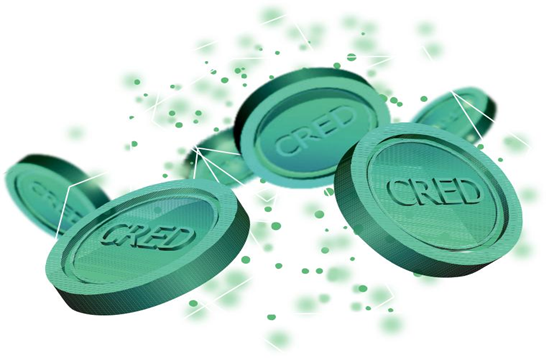Verification: The Revolutionary Commerce Solution Blockchain

Blockchain trade faces enormous technical challenges. These include lack of buyer protection, lack of reputation platform, cheating and among others. It needs to be revolutionized for this industry to be better for all buyers, sellers, and investors worldwide.
Project VERIFY will strengthen the blockchain trade by ensuring protection, speed and convenience within their platforms. Everyone is entitled to this guarantee but not all projects are willing to provide the best for the community. However, here in this project you are in safe hands.
This can be a great investment for investors because of its unique features that bring a lot of potential. Buyers will love this because of their protection and comfort. Likewise, the seller will push to be competitive to gain a lot of profit. So, please meet new innovations in this industry. It starts with knowing the Verify Reputation Protocol.
Verify Reputation Protocol
The core components of the reputation protocol are: participants, transactions and reputation. Before we discuss how reputable systems are designed, it's important to clarify important points around transactions: trust.
A trust-based transaction forms a central part of the reputation protocol, and distinctions must be drawn between transactions that are independent of trust and trust. "Automated" transactions, which are deterministic and have guaranteed results, are transactions that do not require trust. Examples are distributed exchanges with smart contracts with cryptography that atomi exchange one token with another (eg 0x, Airswap). The result of the transaction is a warrant, regardless of the reputation of one of the parties involved.
However, most of the "normal" transactions that we face in our day to day lives are not this form. Actions by the parties directly determine the outcome of the transaction, an unsecured result. This applies to most commercial transactions, whether done online (such as purchases from seller websites, where items are shipped) or in person (eg buying goods from a store). In the case of eCommerce transactions, the seller ships the goods the buyer has purchased, but there is no guarantee that this will happen. The buyer must trust the seller to deliver the goods. This transaction brings a reputation that reputation protocols are designed to make things easier.
HOW REPUTATION WORKS
Reputation is basically the entity's history of all previous transactions carried out through the Verification protocol, and the resulting feedback (positive or negative) is provided by the other party. While reputation mainly refers to seller scores (as assessed by the buyer), but is maintained for all participants in the network including buyers. The buyer's reputation is important to trace, especially in the context of fraud prevention, which will be discussed in detail in Section 4.3. cumulative and permanent.
Reputation is similar to a person's CGPA at the university:
A key feature of reputation is that it can only be affected by verified transactions, transactions that have been made through the Verification protocol. This property is important to protect against some reputation attack vectors.
Establish clear expectations from the parties involved in the transaction. These expectations vary depending on the transaction, but the examples may be:
Buyers pay a certain amount (in stable coins)
Seller to provide item by date in condition. Item should be explained in as much detail as possible.
The buyer initiates the transaction by fulfilling their obligations and transferring the mutually agreed amount to the Verified escrow account.
A portion of the transaction amount is set aside as "insurance fee" on the transaction and retained by Verification as company revenue. This amount must be completed in the CRED token.
The remaining funds are kept in escrow until the transaction is completed (either through confirmation from the seller or after the deadline has elapsed). When the transaction closes, there are two possible outcomes:
Buyers are satisfied: funds are immediately released to the seller in full.
The buyer is not satisfied: the funds remain suspended, and the dispute resolution process begins.
Reputation updated for both parties simultaneously.
The impact that transactions on the reputation of each party is determined by the app but is consistently applied across all app users.
Applications built on the Verification protocol extend the core processes that are here with application-specific implementation.
CRED TOKENS
Maintaining a double meaning for credibility and credit, CRED tokens are at the core of the Verification protocol and have the following properties:
Just as no transactions can occur without trust, the same is true for CRED tokens and Verification protocols. In essence, CRED represents "trust" in a transaction, and no transactions can occur on a platform without an "insurance policy" in the form of a CRED token.
By using a vending machine analogy, when you enter a CRED token into a vending machine (protocol) you will receive an "insurance policy" that can be used to cover commercial trans actions (for example when purchasing goods, you are insured against seller scams.You buy CRED funds tokens this protection policy)
»» Traditional payment instruments charge transaction fees on all transactions, relics of traditional financial infrastructure where each party adds a cost layer above the layer below. It is not surprising that credit card processors have established multiples of hidden cost forms including trans-action, exchange, card processing, setup, currency conversion and chargeback charges. It is not fitting to maintain the same cost structure in this blockchain, where many of these costs are unfounded, and even the mining costs used for processing transactions are very low compared to the median transaction value.
»» For this reason, Verify the total transaction cost at all and only impose an insurance fee of 1% of the transaction value of the seller. This cost can be reduced because the provider (seller) earns a reputation to reflect the reduced risk of insurance they represent. Applications built on Verification protocols (such as Verify Payments) may choose to charge themselves to better reflect their cost structure, but this represents the cost structure for this application (insurance costs are maintained by Verification and recognized as corporate earnings).

Investors should not miss this kind of project. A project that can change the blockchain trade and can generate so many opportunities.
This is all I can tell you, if you want to participate in their project please visit the link I have prepared for you to find more accurate information, if this review is less give information please visit Link below ..
Here More More Accurate Information:
BTT profile name: Ris88







Komentar
Posting Komentar